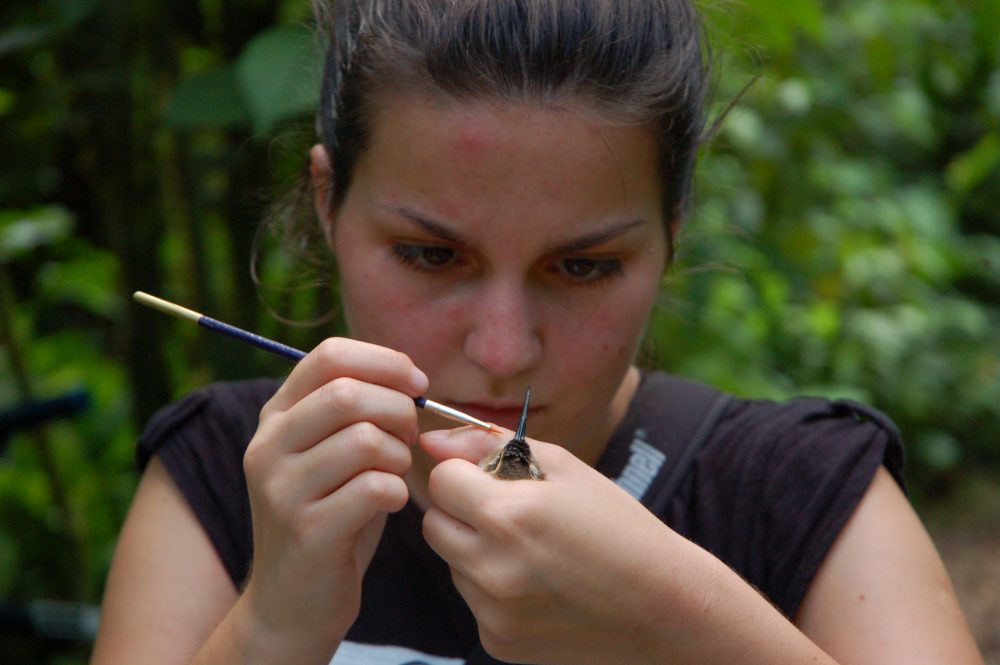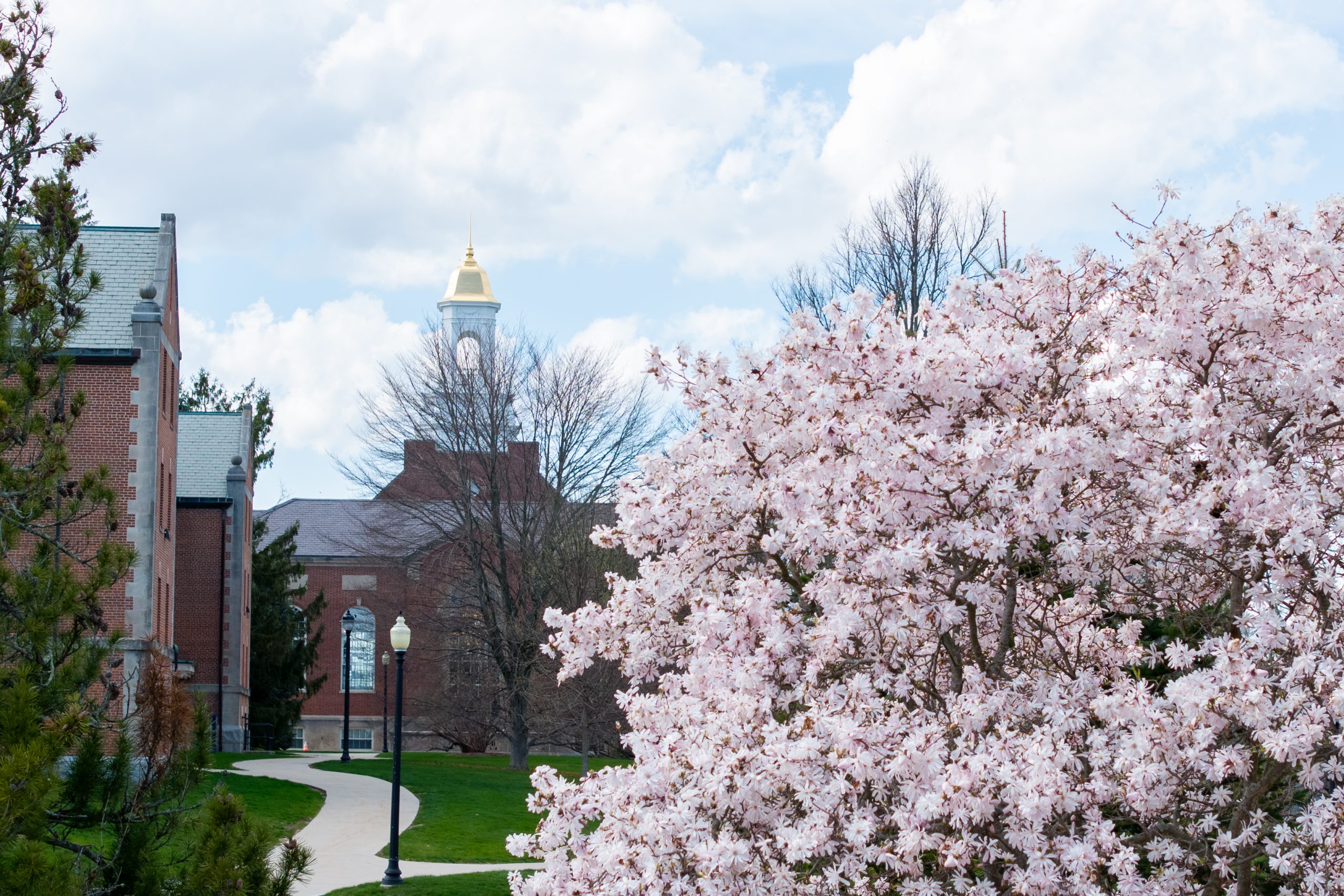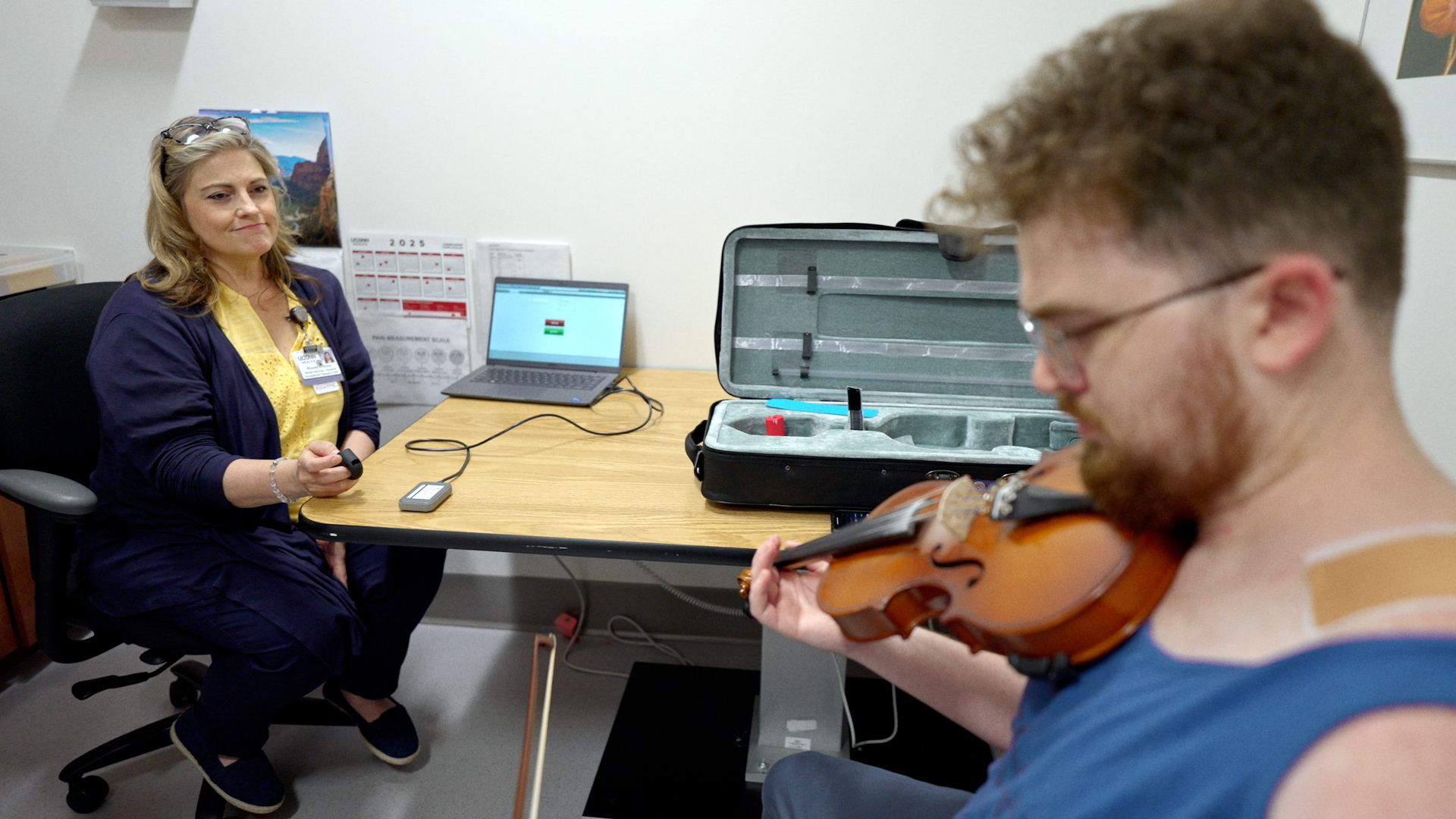Humans aren’t the only flightless creatures who have found a way to take to the sky to get around. Mites, some as tiny as the dot of this ‘i,’ zip around the tropical forest they call home by hitching rides on hummingbirds who serve as living, breathing airplanes.
The hummingbirds ferry around the nectar-robbing, hitchhiking mites who are harmless passengers – except when it comes to taking more than their fair share of nectar from some flowers, says Ecology and Evolutionary Biology Ph.D. student Laura Bizzarri, who has become quite taken with these petite jet setters in the course of her studies. Bizzarri was recently awarded the Alwyn Gentry Award by the Association for Tropical Biology and Conservation for her work.
“I definitely didn’t plan to come to grad school with the idea of studying mites,” says Bizzarri. “As soon as my advisor, Carlos Garcia-Robledo, mentioned that these mites hitchhike on hummingbirds, I thought, ‘Yep, this sounds very interesting.’ I started doing background research, and it wasn’t hard at all to just love them. There are so many unexplored questions about these mites.”
The mites start their journeys by crawling aboard a hummingbird’s beak and later disembark at a flower to feed on the nectar. Bizzarri explains that in a sense, the mites are true free-loaders in that they do not benefit the flowers by pollinating them, as the hummingbirds do, which is why the mites are referred to as “nectar robbers.” Do they have flower preferences? Does it take multiple flights to get to their destination? How do they know when it’s time for a layover? Wanting to answer these questions and more about the mite travel habits, Bizzarri realized that drawing on research about human travel behaviors could be helpful.
“There has been a lot of research done on human transportation geography and about how accessible and effective human transportation hubs can be,” Bizzarri says. “For instance, how easy it is to go from one airport to another, or from one subway station to another, so from there I just started doing some research to try and figure out if there were simpler methods already developed for human transportation.”
Bizzarri came across a method that was flexible enough to be applied to studying the mites.
“The method can be used to measure direct ways of connecting different transportation hubs, but also indirect ones,” Bizzarri says. “For example, if people have to stop or have a layover in an airport to get to their destination. These data can be incorporated fairly easily into a matrix or table to figure out whether they are limited in the host plants that they use by the hummingbirds that they ride on.”
To perform the research, Bizzarri collected over 10,000 mites over a period of six months. She then used DNA barcoding methods to sort the mites into species groups.
“Because I had the information of where those mites were sampled from, I also had the information of what plant species those mites interact with. Then I used GoPro cameras to record the hummingbird visits to the plants and that gave me the component of identifying the hummingbird/plant interactions.”
With the data on the flower transportation hubs, the hummingbird airline routes, and the mite passengers travel itineraries, the next step was to input the data into a model to study how the components interact. Just as with many humans, Bizzarri discovered that the mites tend to prefer direct flights to layovers.
“We found about 18 species of mites and of those, 15 use direct transport pathways where they only need one hummingbird species to get to another one of their host plants,” Bizzarri says. “The remaining three species use some percentage of indirect paths, which means that if they need to get from one host plant to another specific host plant, they need to stop at an intermediate plant while using at least two different hummingbird species to make their trip.”
Bizzarri says the three species of mite that rely on indirect transport could conceivably get anywhere they want via hummingbird, and that there is likely a mechanism they use to recognize their host plants.
“And that is actually part of what I am looking to do in my Ph.D., to figure out what mechanisms can be responsible for the host plant choice on part of the mites.”
Bizzarri is eager to continue studying these tiny creatures, and has plans to expand the model to study mites that hitch rides on beetles.
“One of the coolest things about mites is that they’re probably one of the most diverse groups of arthropods and arachnids but because they’re so small they haven’t been studied as much as other groups of arthropods,” Bizzarri says. “There is probably so much unknown about mites, and that is just so cool. Modern technology allows us to work on smaller things now so there’s a lot of potential.”
Watch as a hummingbird visits a flower, bringing along some tiny passengers (courtesy of Laura Bizzarri):



